-
 Bitcoin
Bitcoin $116900
0.00% -
 Ethereum
Ethereum $4280
5.48% -
 XRP
XRP $3.265
-1.45% -
 Tether USDt
Tether USDt $1.000
-0.01% -
 BNB
BNB $807.0
1.41% -
 Solana
Solana $183.1
2.93% -
 USDC
USDC $0.9999
0.00% -
 Dogecoin
Dogecoin $0.2440
6.50% -
 TRON
TRON $0.3357
-0.88% -
 Cardano
Cardano $0.8178
2.63% -
 Hyperliquid
Hyperliquid $44.13
7.45% -
 Chainlink
Chainlink $21.39
9.09% -
 Stellar
Stellar $0.4524
-0.84% -
 Sui
Sui $3.957
2.13% -
 Bitcoin Cash
Bitcoin Cash $572.7
-2.54% -
 Hedera
Hedera $0.2671
1.54% -
 Avalanche
Avalanche $24.77
4.17% -
 Ethena USDe
Ethena USDe $1.001
0.02% -
 Litecoin
Litecoin $122.3
-1.94% -
 Toncoin
Toncoin $3.432
2.26% -
 UNUS SED LEO
UNUS SED LEO $9.007
0.49% -
 Shiba Inu
Shiba Inu $0.00001396
5.26% -
 Uniswap
Uniswap $11.09
1.64% -
 Polkadot
Polkadot $4.155
4.57% -
 Dai
Dai $1.000
0.00% -
 Pepe
Pepe $0.00001253
5.11% -
 Cronos
Cronos $0.1588
2.67% -
 Bitget Token
Bitget Token $4.512
0.05% -
 Monero
Monero $275.0
0.64% -
 Ethena
Ethena $0.7527
15.10%
What is the principle of Bitcoin mining? Detailed explanation of the Bitcoin mining process
Bitcoin mining secures the network by solving cryptographic puzzles, validating transactions, and introducing new coins through block rewards and transaction fees.
Jun 21, 2025 at 03:43 am
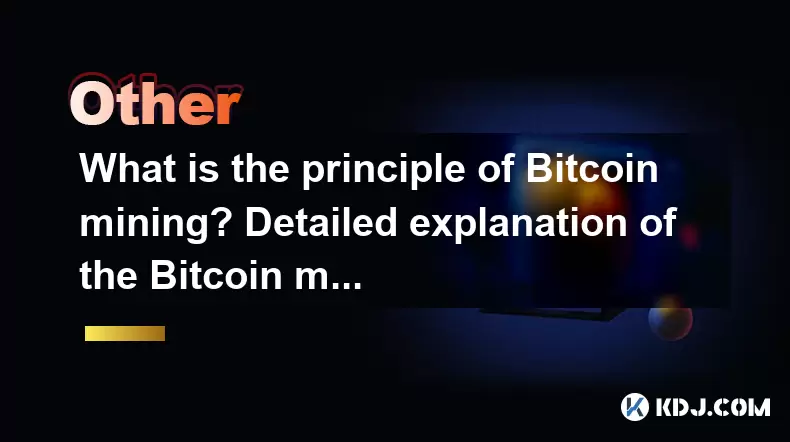
Understanding the Core Concept of Bitcoin Mining
Bitcoin mining is the process through which new Bitcoin transactions are verified and added to the blockchain, while also serving as the mechanism for introducing new Bitcoins into circulation. At its core, mining involves solving complex cryptographic puzzles using computational power. This decentralized method ensures that no single entity controls the entire network.
Each transaction on the Bitcoin network is grouped with others into a block, and miners compete to validate these blocks by solving a cryptographic hash puzzle. The first miner to find a valid solution broadcasts it to the network, where other nodes verify its correctness. Once validated, the block is appended to the blockchain.
The Role of Proof-of-Work in Bitcoin Mining
The Proof-of-Work (PoW) consensus algorithm is fundamental to Bitcoin's security and decentralization. Miners must prove they have expended computational effort to earn the right to add a block to the chain. This work involves repeatedly hashing the block data with a nonce (number used once) until a hash below a certain target value is found.
This process is intentionally resource-intensive and time-consuming to prevent malicious actors from easily manipulating the system. The difficulty of the puzzle adjusts approximately every 2,016 blocks, ensuring that blocks are mined roughly every ten minutes regardless of how much computing power is added or removed from the network.
Hardware Requirements for Efficient Bitcoin Mining
Initially, Bitcoin could be mined using standard CPUs, but over time, more efficient hardware has become necessary due to increased competition and difficulty levels. Today, Application-Specific Integrated Circuits (ASICs) are the most effective tools for Bitcoin mining.
These specialized devices are designed solely for mining purposes and offer significantly higher hash rates while consuming less electricity per hash compared to older technologies like GPUs or FPGAs. Choosing the right ASIC model depends on factors such as hash rate, power consumption, and cost-effectiveness.
Miners also need reliable cooling systems and stable internet connections to ensure continuous operation. Additionally, joining a mining pool may be beneficial for individual miners, as it allows them to combine resources and increase their chances of earning rewards.
Step-by-Step Breakdown of the Mining Process
- Transaction Collection: Miners gather unconfirmed transactions from the mempool and verify their validity.
- Block Formation: Valid transactions are bundled into a candidate block, including a reference to the previous block’s hash.
- Hashing: A Merkle tree is constructed from the transactions, resulting in a Merkle root that represents all transactions in the block.
- Nonce Selection: The miner begins trying different nonce values to generate a hash that meets the current difficulty target.
- Validation: When a valid hash is found, the miner broadcasts the new block to the network for verification by other nodes.
- Consensus: If accepted, the block is added to the blockchain, and the miner receives the block reward plus transaction fees.
This iterative process repeats continuously, maintaining the integrity and growth of the Bitcoin blockchain.
Economic Incentives Behind Bitcoin Mining
Miners are rewarded in two primary ways: block rewards and transaction fees. The block reward is newly minted Bitcoin given to the miner who successfully validates a block. This reward halves approximately every four years in an event known as the Bitcoin halving, reducing inflation over time.
In addition to the block subsidy, miners collect transaction fees paid by users to prioritize their transactions. As block space becomes more competitive, users may pay higher fees to get faster confirmations. Over time, as block rewards diminish, transaction fees are expected to play a larger role in sustaining miner profitability.
These economic incentives encourage miners to act honestly and maintain the network’s security. Attempting to attack the network would require controlling more than 50% of the total hashing power, which is prohibitively expensive and unlikely to yield long-term gains.
Frequently Asked Questions About Bitcoin Mining
What is the difference between solo mining and pool mining?
Solo mining means attempting to mine blocks independently without sharing resources. While this offers full control and potential rewards, success is rare unless you have substantial hashing power. Pool mining involves joining a group of miners who share their computational resources, increasing the likelihood of earning regular but smaller payouts.
How does mining affect Bitcoin’s supply?
Mining introduces new Bitcoins into circulation according to a fixed schedule. Each block adds a set number of coins until the maximum supply of 21 million is reached, which is projected to occur around the year 2140.
Can anyone start Bitcoin mining today?
Technically, yes, but it requires significant investment in hardware, electricity, and infrastructure. Profitability depends on several variables including energy costs, mining difficulty, and Bitcoin’s market price.
Is Bitcoin mining environmentally harmful?
It can be energy-intensive, especially when powered by fossil fuels. However, many miners are increasingly utilizing renewable energy sources such as hydroelectric, solar, or wind power to reduce environmental impact.
Disclaimer:info@kdj.com
The information provided is not trading advice. kdj.com does not assume any responsibility for any investments made based on the information provided in this article. Cryptocurrencies are highly volatile and it is highly recommended that you invest with caution after thorough research!
If you believe that the content used on this website infringes your copyright, please contact us immediately (info@kdj.com) and we will delete it promptly.
- Trump, Nasdaq, and Token Treasury: WLFI's $1.5B Gambit
- 2025-08-10 06:50:12
- Trump, Nasdaq, and Token Treasury: WLFI's $1.5B Play
- 2025-08-10 06:30:11
- Coinbase, DEX Trading, and Base Network: A New Era for Crypto?
- 2025-08-10 06:30:11
- Block Inc., Bitcoin, and Mining Chips: Reshaping Digital Finance, New York Style
- 2025-08-10 06:50:12
- Stablecoin Surge Ignites Altcoin Investment Hunt: What's Hot Now?
- 2025-08-10 06:55:16
- Penny Crypto Dreams: Can XRP Reach $10,000? A Look at LILPEPE and the Meme Coin Mania
- 2025-08-10 04:50:11
Related knowledge
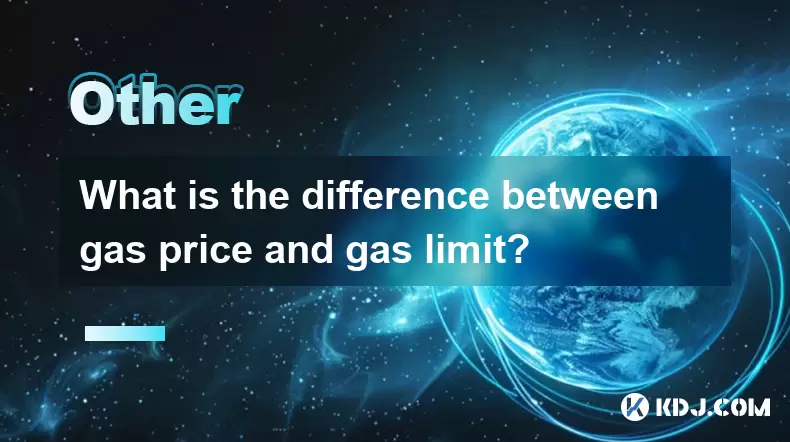
What is the difference between gas price and gas limit?
Aug 09,2025 at 08:42pm
Understanding Gas in Ethereum and EVM-Based NetworksIn blockchain networks that support smart contracts—particularly Ethereum and other EVM (Ethereum ...
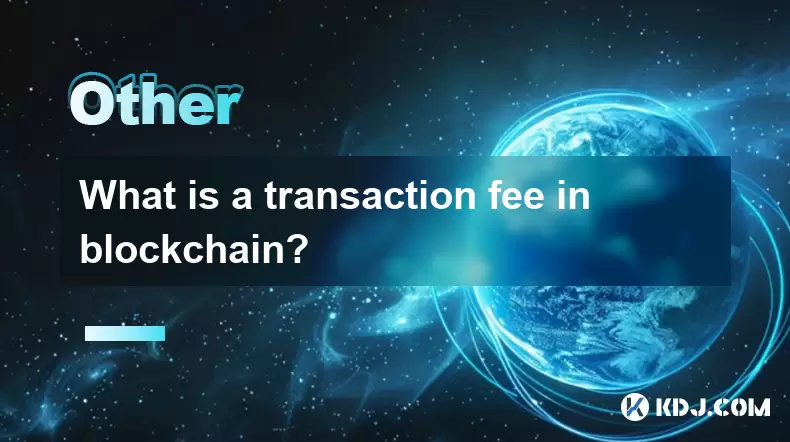
What is a transaction fee in blockchain?
Aug 08,2025 at 09:21pm
Understanding the Basics of Blockchain Transaction FeesA transaction fee in blockchain is a small amount of cryptocurrency paid by a user to process a...
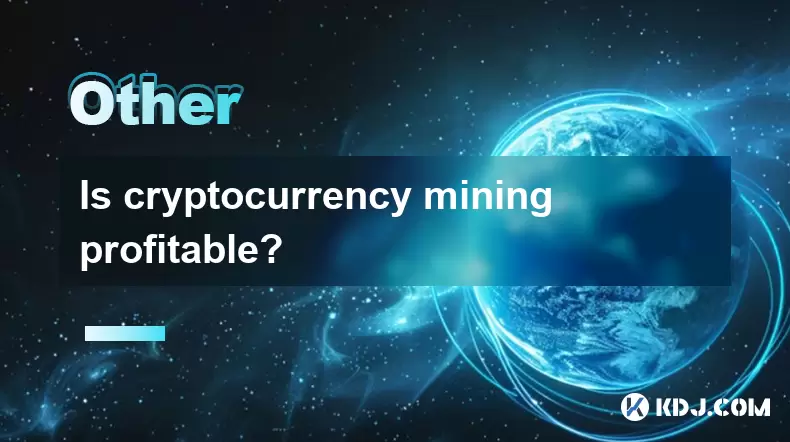
Is cryptocurrency mining profitable?
Aug 09,2025 at 01:28am
Understanding Cryptocurrency Mining BasicsCryptocurrency mining is the process by which new digital coins are introduced into circulation and transact...
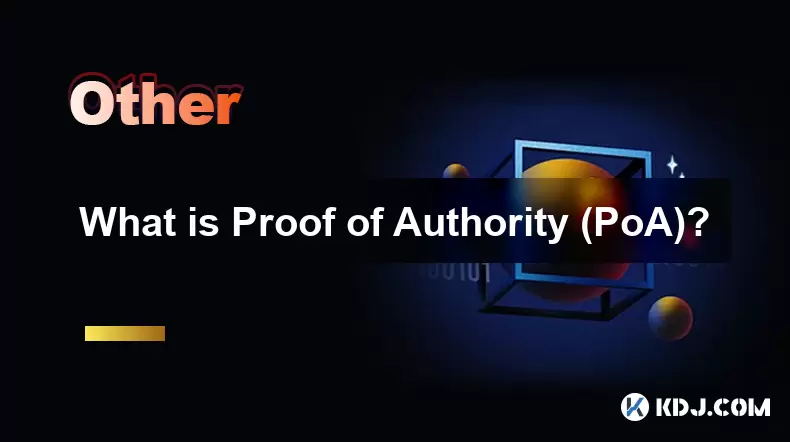
What is Proof of Authority (PoA)?
Aug 09,2025 at 05:01am
Understanding Proof of Authority (PoA)Proof of Authority (PoA) is a consensus mechanism used in blockchain networks to validate transactions and creat...
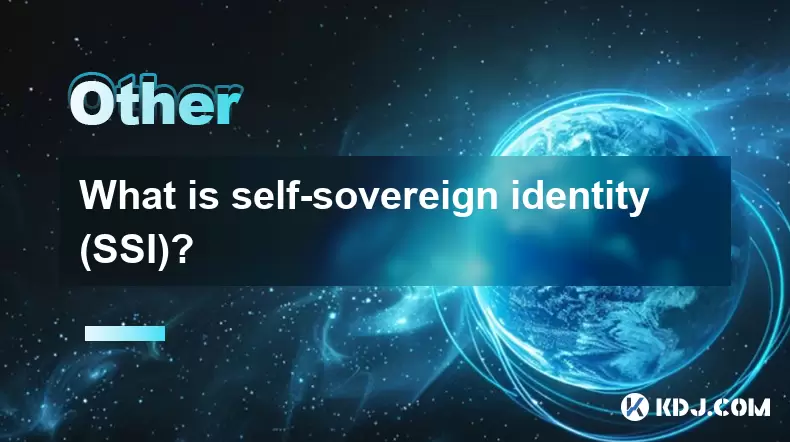
What is self-sovereign identity (SSI)?
Aug 09,2025 at 08:49pm
Understanding the Role of Private Keys in Cryptocurrency SecurityIn the world of cryptocurrency, private keys are the most critical component of digit...
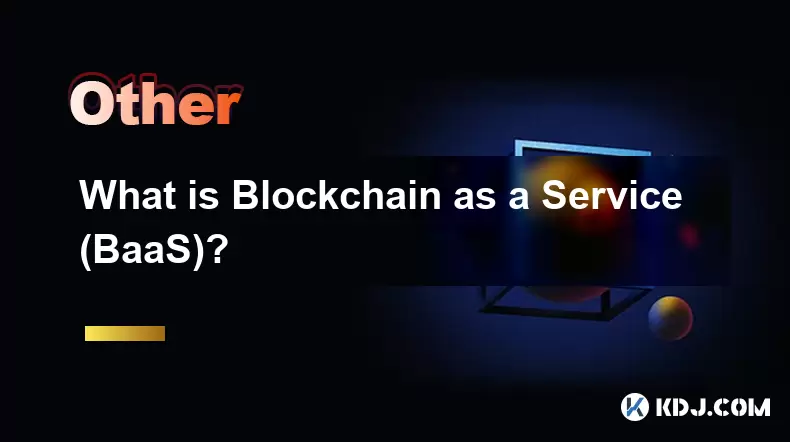
What is Blockchain as a Service (BaaS)?
Aug 10,2025 at 07:07am
Understanding Blockchain as a Service (BaaS)Blockchain as a Service (BaaS) is a cloud-based offering that allows individuals and organizations to buil...

What is the difference between gas price and gas limit?
Aug 09,2025 at 08:42pm
Understanding Gas in Ethereum and EVM-Based NetworksIn blockchain networks that support smart contracts—particularly Ethereum and other EVM (Ethereum ...

What is a transaction fee in blockchain?
Aug 08,2025 at 09:21pm
Understanding the Basics of Blockchain Transaction FeesA transaction fee in blockchain is a small amount of cryptocurrency paid by a user to process a...

Is cryptocurrency mining profitable?
Aug 09,2025 at 01:28am
Understanding Cryptocurrency Mining BasicsCryptocurrency mining is the process by which new digital coins are introduced into circulation and transact...

What is Proof of Authority (PoA)?
Aug 09,2025 at 05:01am
Understanding Proof of Authority (PoA)Proof of Authority (PoA) is a consensus mechanism used in blockchain networks to validate transactions and creat...

What is self-sovereign identity (SSI)?
Aug 09,2025 at 08:49pm
Understanding the Role of Private Keys in Cryptocurrency SecurityIn the world of cryptocurrency, private keys are the most critical component of digit...

What is Blockchain as a Service (BaaS)?
Aug 10,2025 at 07:07am
Understanding Blockchain as a Service (BaaS)Blockchain as a Service (BaaS) is a cloud-based offering that allows individuals and organizations to buil...
See all articles

























































































